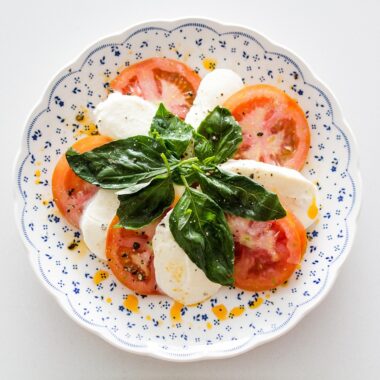Passover, or Pesach in Hebrew, is one of the most significant Jewish holidays, commemorating the Exodus of the Israelites from slavery in Egypt. Central to this celebration is the observance of dietary laws unique to this holiday. These laws, collectively known as Kashrut for Passover, require avoiding certain foods and ingredients while adhering to specific guidelines. This article will delve into the intricacies of kosher foods for Passover, providing a comprehensive guide for those observing or seeking to understand this tradition.
Understanding the Basis of Kosher for Passover
The primary restriction during Passover is the prohibition of chametz—any food product made from wheat, barley, rye, oats, or spelt that has leavened or risen. The Torah forbids chametz to commemorate the Israelites’ hasty departure from Egypt when they did not have time to let their bread rise. Foods containing leavening agents, such as yeast, are also prohibited.
In addition to chametz, many Ashkenazi Jews avoid kitniyot, which includes legumes, rice, corn, and other grains. Sephardic Jews, on the other hand, often include kitniyot in their Passover diets. This cultural difference highlights the diversity within Jewish communities.
The Core Kosher Foods for Passover
Matzah
Matzah is an unleavened bread made from flour and water that has not been allowed to rise. It is the quintessential food of Passover, symbolizing both humility and the haste of the Exodus.
Types of matzah: Regular matzah, whole wheat matzah, and gluten-free matzah made from alternative flours like potato starch.
Uses: Matzah is eaten during the Seder and throughout the holiday as a bread substitute.
Fruits and Vegetables
Fresh fruits and vegetables are naturally kosher for Passover, provided they have not been processed with chametz or kitniyot.
Preparation: Ensure all fruits and vegetables are thoroughly washed and peeled if necessary.
Examples: Apples, oranges, carrots, potatoes, and lettuce are common staples.
Meat and Poultry
All kosher-certified meats and poultry are acceptable for Passover, as long as they are processed in facilities that adhere to Passover-specific guidelines.
Examples: Chicken, beef, lamb, and turkey.
Important Note: Avoid processed meats unless they are explicitly labeled “Kosher for Passover.”
Fish
Fish that is kosher year-round is also kosher for Passover, as long as it has fins and scales.
Examples: Salmon, cod, tilapia, and haddock.
Preparation: Avoid breaded or processed fish unless certified for Passover.
Eggs
Eggs are a versatile and commonly used food during Passover. They are naturally kosher and play a role in many traditional recipes.
Passover-Specific Ingredients
Kosher for Passover Flour
While regular flour is prohibited, certain flours made from matzah or alternative ingredients are allowed. These are used in baking and cooking.
Examples: Matzah meal, potato flour, and almond flour.
Potato Starch
Potato starch is a staple in many Passover recipes, serving as a thickener or baking ingredient.
Sugar and Sweeteners
Regular sugar and some sweeteners are permissible if certified kosher for Passover.
Examples: Granulated sugar, honey, and maple syrup.
Cooking Oils
Some oils are acceptable, provided they are certified kosher for Passover.
Examples: Olive oil, avocado oil, and coconut oil.
Salt and Spices
Pure salt and many spices are kosher for Passover as long as they do not contain additives or chametz.
Preparation: Check labels for certification.
Foods to Avoid
Chametz
As mentioned, chametz includes leavened bread, pasta, cereals, and certain beverages made from fermented grains.
Kitniyot
Ashkenazi Jews traditionally avoid kitniyot, which includes:
Corn
Rice
Lentils
Peas
Soybeans
Processed Foods
Many processed foods, such as snacks, sauces, and ready-made meals, are not kosher for Passover unless specifically certified.
Passover Seder Foods
The Passover Seder is a ritual feast that includes specific foods with symbolic meanings:
Maror (Bitter Herbs): Symbolizing the bitterness of slavery.
Examples: Horseradish or romaine lettuce.
Charoset: A sweet mixture representing the mortar used by the Israelites.
Ingredients: Apples, nuts, cinnamon, and wine.
Karpas: A vegetable dipped in saltwater, symbolizing tears shed by the Israelites.
Example: Parsley or celery.
Zeroa (Shank Bone): Representing the Passover sacrifice.
Substitute: A roasted beet for vegetarians.
Beitzah (Egg): Symbolizing mourning and the cycle of life.
Certified Kosher for Passover Products
To ensure compliance, many products are labeled as “Kosher for Passover.” This certification guarantees that the food has been prepared in accordance with Passover laws.
Examples: Passover-certified snacks, dairy products, and beverages.
Common Kosher for Passover Recipes
Matzah Ball Soup
Ingredients: Matzah meal, eggs, chicken broth, and spices.
Charoset
Ingredients: Apples, walnuts, honey, cinnamon, and red wine.
Potato Kugel
Ingredients: Potatoes, onions, eggs, and olive oil.
Flourless Chocolate Cake
Ingredients: Cocoa, eggs, sugar, and almond flour.
Tzimmes
Ingredients: Sweet potatoes, carrots, dried fruits, and honey.
Tips for Navigating Kosher for Passover Shopping
Read Labels Carefully
Look for “Kosher for Passover” certification on packaging.
Shop Early
Passover foods can sell out quickly as the holiday approaches.
Consult with a Rabbi
For any uncertainties, seek guidance from a knowledgeable authority.
Cultural Variations in Kosher for Passover Practices
Ashkenazi Traditions
Ashkenazi Jews are stricter, avoiding kitniyot and other items not traditionally part of their cuisine.
Sephardic Traditions
Sephardic Jews often incorporate rice, beans, and legumes into their Passover meals.
Modern Innovations
In recent years, there has been a rise in gluten-free and vegan Passover products to accommodate dietary restrictions.
Understanding what foods are kosher for Passover requires attention to tradition, religious guidelines, and certification. Whether preparing for a Seder or planning meals for the week, adhering to these principles ensures a meaningful and compliant celebration. By embracing the diverse and symbolic foods of Passover, participants honor their heritage while fostering a deeper connection to their faith.


















